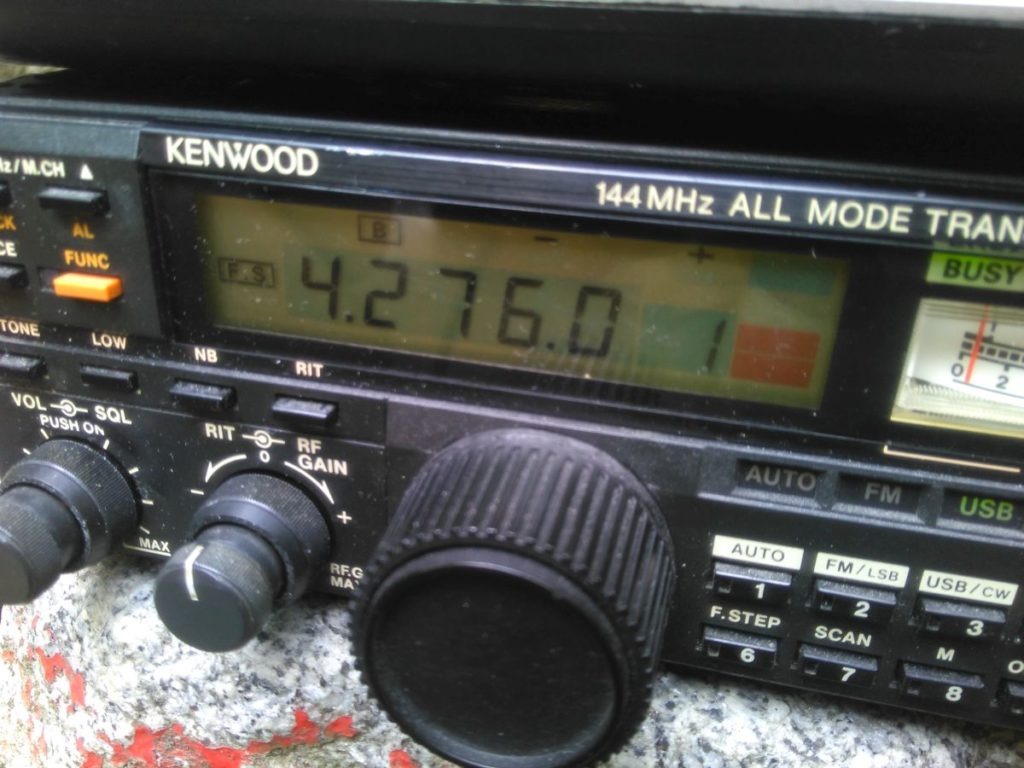Nasledujúci článok ma veľmi zaujal a poprosil som jeho autora – Ladislava Bálinta – o súhlas s jeho publikovaním na CQ.sk. Ladislavova stránka „Meteory“ je výborná. Ďakujeme!
Stopa meteoru odráža rádiové vlny tak ako zrkadlo svetlo. Môžete si to predstaviť asi takto: vysielač je zdroj svetla a stopa meteoru je dlhé zrkadlo. Tak zbadáte svetelný bod na zrkadle.
Všetky údaje odvodené z pozorovaní sú založené na tomto princípe. Poloha svetelného bodu závisí len od uhlu odrazu. V našom prípade závisí od polohy vysielača, prijímača a od polohy stopy.
Mechanizmus odrazu závisí od toho, ako je hustý ionizovaný plyn stopy. Keď je hustota iónov veľmi veľká, stopa má vlastnosti plazmy. Rádiové vlny „nemôžu vstúpiť“ do vnútra stopy (plazma žiari na vyššej frekvencii ako nami použité rádiové vlny) a odrážajú sa od „povrchu stopy“. Takúto stopu nazývame hustou (overdense trail). Keď plazma žiari na nižšej frekvencii ako naša pozorovacia frekvencia, rádiové vlny vniknú do vnútra stopy a rozptyľujú sa od osamotených elektrónov. Takúto stopu voláme riedkou (underdense trail).
Odraz od stopy meteory je vlastne interferencia. Vlny sa síce rozptyľujú na všetky strany, ale interferencia spôsobí, že vlny sa najviac odrážajú v smere podľa zákona o odraze. Niekedy sa však stopa meteoru zdeformuje a môže sa stať, že signál sa odráža z viacerých bodov. To sa prejaví ako rozdiel vo fáze medzi týmito signálmi. Čiže vieme určiť, ktorá časť stopy prispieva k odrazu, a ktorá má tendenciu odraz tlmiť. Takéto časti stopy voláme Fresnelove zóny.
Čiže počas preletu meteoru registrujeme striedavé zosilňovanie a zoslabovanie signálu. Ak poznáme veľkosť Fresnelových zón, rýchlosť preletu meteoroidu zistíme jednoducho podľa frekvencie oscilácie. Veľkosť Fresnelových zón závisí na uhle odrazu a na použitej frekvencii.
Difúzia stopy
Už počas vytvárania stopy sa ióny začínajú rozptyľovať do okolitej atmosféry. Rozdelenie hustoty iónov je vždy „Gaussovské“.
Difúzia spôsobuje, že hustá časť stopy sa zväčšuje, ale jej hustota postupne klesá. Potom sa veľkosť hustej stopy zmenšuje, až táto stopa zanikne. Toto sa prejaví aj na prijímanom signále. Najprv sa signál zosilní (hustá stopa sa zväčšuje), potom zoslabí (hustá stopa sa zmenšuje) a nakoniec sa prudko stratí (hustá stopa zanikla). Ostane len riedka stopa.
Pri riedkej stope sa signál odráža od osamotených elektrónov. Ako sa riedka stopa rozptyľuje, koherencia sa stráca a intenzita signálu prudko klesá. Pokles intenzity signálu je exponenciálny. Exponenciálna časová konštanta závisí od rýchlosti difúzie, rýchlosť difúzie je v podstate funkciou atmosférickej hustoty.
Vplyv (strih) vetra
Silný vietor v hornej atmosfére zdeformuje a „roztrhne“ stopu. Dalo by sa aj napísať, že rozbije zrkadlo.
Výsledok je viacnásobný odraz z rôznych bodov na stope. Rádiové vlny z rôznych bodov odrazu podliehajú interferencii. Vietor má na svedomí aj to, že bod odrazu nie je nehybný, prejavuje sa to ako silná oscilácia prijímaného signálu. Toto spozorujeme až po niekoľkých sekundách. Čiže je jasné, že toto nemôžu urobiť riedke stopy (málokedy trvajú dlhšie ako niekoľko desatín sekundy). Obvyklá frekvencia tejto oscilácie je 5 až 10 Hz. Tieto oscilácie niekedy nazývame „veľký únik – deep fading“.
Rozoznávanie druhov stôp pomocou počítača
Tu znovu pripomínam, že nemám žiadne skúsenosti s pozorovaním a spracovaním rádiových meteorov, čiže je to len preklad zahraničných internetových stránok. Ak získam potrebné skúsenosti, rád sa pochválim …
Ak na spracovanie pozorovaní používame počítač (napríklad podľa návodu vypracovaného na univerzite v Ghente), môžeme jednoducho určiť, druhy stôp. Na tomto obrázku je typický profil riedkeho meteoru. Po prudkom vzraste nasleduje exponenciálny pokles spôsobený difúziou. (Tieto obrázky som prevzal z www.imo.net)
Na ďalšom obrázku je typický profil hustého meteoru. Po prudkom vzostupe signálu nastanú pulzácie signálu (príčina je popísaná vyššie) a nakoniec signál prudko exponenciálne poklesne (hustá časť stopy zanikne).
Na ďalšom obrázku je profil dlhotrvajúceho hustého meteoru. Signál „vyzerá“ podobne ako v predošlom prípade, ale po niekoľkých sekundách vietor vytvorí viacnásobné odrazy, ktoré v tomto prípade vytvoria veľký únik. Dobre si všimnite mierku na týchto dvoch obrázkoch.
Pripomínam, že nie všetky profily meteorov sú také „pekné“ ako na týchto obrázkoch …
Záver
Na základe napozorovaných „profilov“ meteorov by nemal byť problém získať fyzikálne vlastnosti meteorov. Ale profil meteoru ovplyvňujú aj iné efekty, ktorými som sa v predošlom texte nezaoberal. Napríklad iónová hustota sa nemení len difúziou ale aj rekombináciou iónov. Rýchlosť rekombinácie iónov závisí od toho, ako je stopa osvetľovaná Slnkom. Navyše vlastnosti atmosféry sa rýchlo a nepredvídateľne menia. Preto málokedy vieme presne určiť uhol odrazu. Ak chceme presne analyzovať vlastnosti meteorov, najprv by sme mali presne analyzovať tieto efekty a pozorovania meteorov o tieto efekty opraviť.
